Don't wanna be here? Send us removal request.
Text
Summed Up in Seven Artworks

I decided to synthesize my learnings by looking at the works around me. Through this, I wanted to practice my critical abilities in consuming these works and the implications of it, and not just take it as it is.
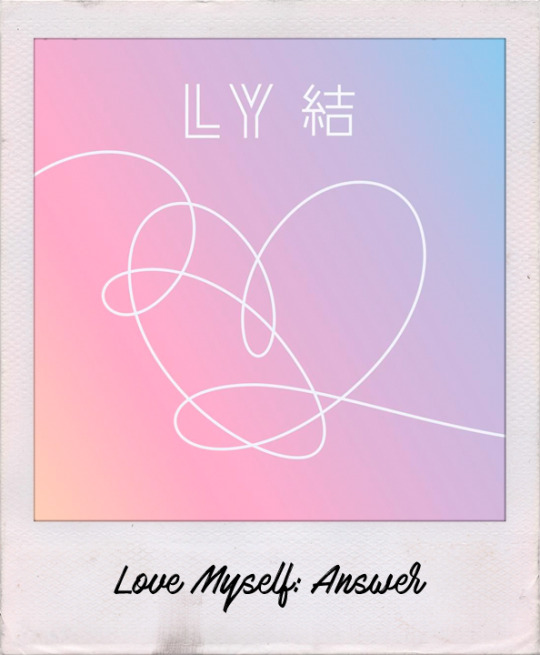
Picture Source
Using the four planes of analysis, I will be analyzing one of my favorite BTS songs, “Answer: Love Myself”. Firstly, the tune of the song is upbeat and light, giving a positive feeling to the listener. The melody would make the listener sing along and lift their spirits up a little. Secondly, the lyrics and the message it contains adds to the positive feeling its melody provides. For a little background, the song is about accepting and loving yourself despite all the flaws and the pains.
Loving myself might be harder Than loving someone else Let’s admit it The standards I made are more strict for myself
The message evokes the listeners’ emotions especially if they resonate with what they are saying. To dive deeper into the context of the work, it’s entitled “Answer: Love Myself” which is part of the album “Love Yourself: Answer”. This album is one of their albums under the Love Yourself trilogy in which they promoted self-acceptance and self-love. BTS had been making music since 2013, delving into topics that relate to the youth such as the problematic school system, romance, beauty of friendships, and the self.
I value this work in high regard due to personal reasons. It is more than just a song for me as it affected my life and how I view myself greatly. I can say the BTS’ purpose of influencing the youth positively is a success to me as an individual.
However, I could not say the same for other people. Some would refuse to listen to it just because they don’t understand Korean, or because it isn’t the genre they prefer. Despite that, I respect people’s perspectives on this song and BTS in general. This is what most fans of any artist lack. It made me realize, as I got more and more involved with fan culture, that most fanatics do not accept criticisms made towards their idols and regard them as the best among others. I find this very problematic and if you, as a fan, aren’t critical about the fan posts you consume and share, you may be part of the toxicity.
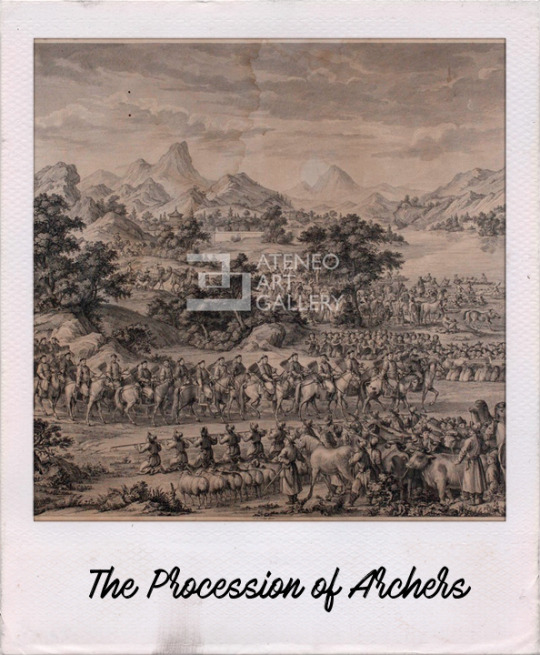
My Essay: Reading the Image
Reading my essay once again, I got deep into elaborating on the details seen in the work and the context surrounding it. However, I wasn’t able to evaluate it against the historical and present context. Historically, the “Procession of Archers” may be considered as a good artwork as it shows the usual style and theme of art back in the day. Printing was a common technique used before the invention of photography, so this type of work may be seen a lot. On the other hand, I honestly think this would not be appealing to the people of today. It may be valued as part of history, but if an artist were to create a print similar to this style, it wouldn’t be as appreciated due to the more modern ways of creating art available today.
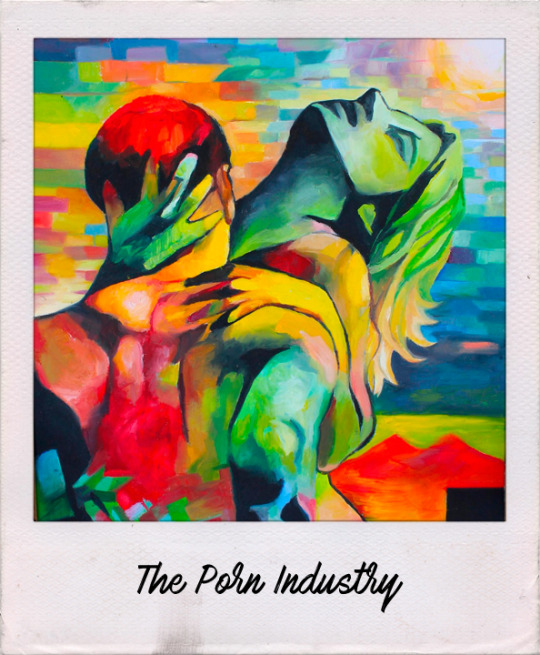
Picture Source
In terms of art and reality, an industry that isn’t usually talked about comes to mind: the porn industry. To the extent of my knowledge, the portrayal of sex and women in pornography is incredibly toxic and harmful. Porn sites are packed with images that are more centered on women, making it seem that most videos are catered to men. This further perpetuates the concept of the male gaze; in fact, you won’t be able to see many videos catered to women’s needs. Additionally, the porn industry represents modern and postmodern simulacra: this industry capitalizes on peoples’ needs and uses the labor of (mostly) vulnerable people who had no choice but to do sex work. Furthermore, rape, abuse, child pornography, among others, are the most common illegal and unethical actions that a great number of porn videos show (although not explicitly). These are often just hinted and glossed over with an unrealistic plot and acting; if you’re not critical to the videos you consume, there’s a huge chance you may internalize these harmful notions.
I am not saying that porn is bad, as I do believe that sex work is work (but only if it’s consensual), but the body that governs this industry allows harmful (virtual) realities to take place on people’s screens, which may transcend dangerously to the actual world if these viewers aren’t critical.
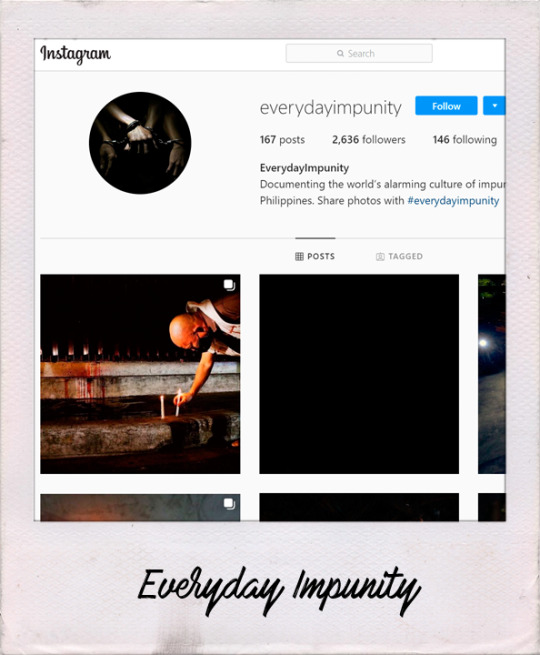
Check out: @everydayimpunities on Instagram
The podcast I did with my group mates was honestly enjoyable to work on since it challenged me to think deeper about the realities presented by the work of art we chose. We picked the Instagram account @everydayimpunities which features pictures taken during the actual scenes of various social injustices nationwide, and sometimes outside the country. We tackled the work from different angles and perspectives and identified its role in the development of art. My main takeaway from this is that art always had a powerful impact on people’s awareness of social and political issues, but due to our technology today, it is even more powerful and wide-reaching. However, it also worth noting that there are still some risks and dangers in this modern technology. Although we have freedom of expression, people of power abuse their abilities to silence those who speak against them. It may be easy and convenient to just hit the Tweet button whenever we have something to say, but there might be grave consequences if we do it carelessly.
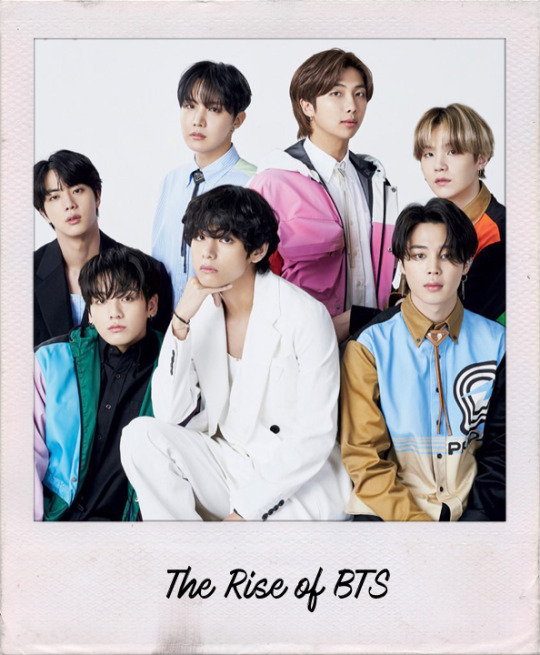
Picture Source
Adding on to the topic of BTS and K-Pop, the rise of BTS showed me the internalized superiority of the Western world. Even before, there’s this ugly perception of K-pop that made it seem like it’s ‘low art’. In the Philippines, K-pop fans were looked down upon for idolizing artists who “just sing and dance” and male idols who they called “gay” (as if it’s an insult) for wearing makeup. K-pop may be getting into the mainstream nowadays, but the rise of BTS constantly shows how Western media (and its people) are reluctant to accept an industry of talents just because they do not produce music in English. Although the said band is getting so big, they are still often mistreated by the media since they are people of color and produce music in Korean. They are treated like an “other” all the time despite being as, if not more, talented as these huge mainstream artists. In other words, they aren’t valued as artists the same way society values big singers such as Beyonce, Drake, and the like. Their songs and their listeners are often judged upon with haters saying, “why do you even listen to that? You don’t even understand it” as if translations of their wonderful messages aren’t available on the net. There’s this symbolic violence in how locals and the media react to uprising POC (people of color) artists, making it extra hard for them to enter the global scene. This issue can also be seen in other forms of art like the recent release of “Parasite” by Bong Joon Ho which achieved a well-deserved recognition but also garnered condescending criticisms from racist people.
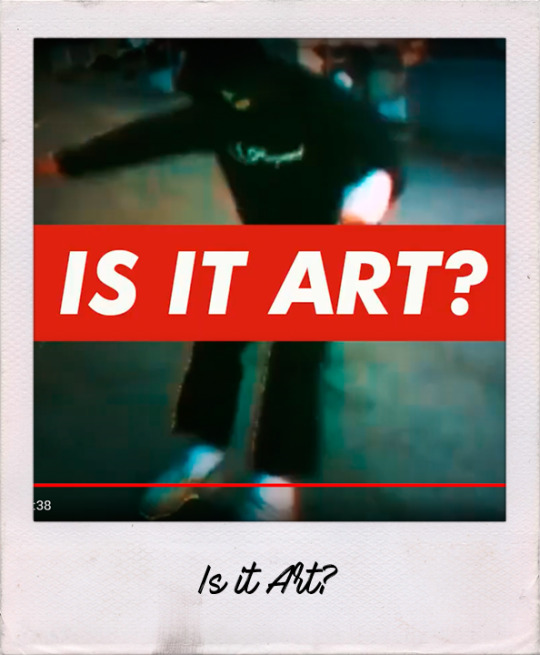
Watching our video essay made me understand the concept behind collecting thousands of fashion items such as footwear, bags, and clothes. Although as a sustainability advocate, I do not resonate nor support it, I can’t hate on people who do collect since we all have different values and belief systems. Collecting dozens of expensive, limited-edition hype shoes that I won’t even wear once in my life may sound absurd and wasteful to me, but for some people, these are expressions and representations of a culture that they are part of. This may apply to collectors of figurines, luxury items, and even fan merchandise as well. They collect these things that have value to them personally, not necessarily aiming to appeal to what society says.

My Identity Map
My identity map consists of objects and symbols that represent who I am to the very core. It may all seem literal and that it speaks for itself, but these images display a much deeper portrayal of my core values. For instance, I am often described as a goal-oriented and organized person, setting systems to achieve my laid-out dreams. To represent this, I used images of my body goals, house goals, business goals, and lifestyle goals. However, these pictures do not only portray my goals and my dreams, but also the values I already have. I am an advocate of sustainability and a student of business. Those two combined, I aim to be a businessperson creating businesses that would be rooted in sustaining life and not centered around making a lot of money and being rich.
Among the prompts listed, I wasn’t able to depict my family and heritage, things to forget, and things to figure out. Instead of putting an image of my family, I inserted an image of BTS who I consider as the people who have created a positive impact on my growth as a person. Moreover, since I initially planned to make this as my dream board which I could look at every day to have a visual representation of my dreams, I didn’t want to put ‘things to forget’ since I would not forget it if I see it every day. (Also because it’s my fault for not knowing all prompts should be visible.)
Overall, I think this map wholly represents who I am and who I can be. As I mentioned in my write-up, I am still growing, therefore this identity map is expected to change over time.
I do not own the pictures used in this Identity Map.
0 notes
Photo

Goals. Gym. Coffee. Sustainability. Business. Growth.
This set of words and pictures combined is a formula that would make up Riza Quevada. Although I haven’t attained some of the images shown in this collage, I have the strong mindset that these will soon make up the life that I want.
PS. I am using this project as the second version of my dreamboard: a board where I could visualize what I want to be, do and have in life. It may sound like these are things that I do not have yet, but the energy exuded by the women in this collage are already in me. I just have to use this energy to work for the things I want to achieve. Hence the semi-visible sprout that represent the me who still has a lot to learn and unlearn to meet her full potential. I am still growing :)
0 notes
Text
The “Procession of Archers” by B.L. Prevost

Photo from the Ateneo Art Gallery Website
Significant moments in history have always been part of what art represents. History and art go hand-in-hand in preserving the culture, the event, and the people who used to exist at some point in time. Art serves as a time capsule to introduce a glimpse of the past to the viewers of the present.
The “Procession of Archers” by Benoît-Louis Prévost is a 90 x 52 cm. print that showcases a historical moment in time. It is an engraving, a technique wherein artists create an image using a printing plate (Fine Rare Prints, n.d.). This procedure was one of the usual methods of printing asides from woodcut and etching before the invention of photography (The National Gallery, n.d.).
The print mentioned shows a highly intricate picture of an event; there are plenty of subjects that the viewer can absorb. The main subject of this work is the group of men in the center as implied by the use of lines seemingly encircling them and the application of space between the men and the other groups of people. They also form lines with each other, creating a sense of order and organization within the work of art. Basing on the title itself, this group of men are archers; their bow-and-arrows are suddenly recognizable due to the title. This detail was only noticeable due to the title; if it was a different one, viewers might notice the arrows much later.
Besides, they are also facing the viewers slightly to the right. They are on horses and moving as a group, forming a procession. They give off a sense of dominance over the other minor subjects, since in contrast to them, these people are kneeling or standing, and nobody from that group is on their horses. They seem to pay respect and attention to the ones in the procession.
In terms of planar space, albeit minimal, there is still a presence of negative space shown in the sky. In contrast, the grounds are full of people and animals, implying the narrative that there is a huge event going on.
The perspectival space of this print is extraordinary. As the viewers look to the far distance within the image, they discover more than what they formerly saw. What is astonishing about this is the number of people shown in the artwork; there are more people beyond what the viewers first took notice of, and what this image tried to capture as a whole. Additionally, when you look at the far center slightly to the left, you can make sense of a gated establishment with old buildings and trees behind it.
The achromatic value of the work shows a perception of the seriousness behind the context. Besides, the trees that appear to surround the men are the darkest subjects of the image; it attracts the audience to pay attention to the men first. Additionally, due to the lack of color in the picture, viewers could hardly recognize the body of water where the boats are.
Proceeding with the possible context of this artwork, the artist behind this is Benoît-Louis Prévost, a French engraver who lived from 1747 to 1804 (Art Institute of Chicago, n.d.). It falls under Neoclassicism-- the era of the rediscovery of the past. Artists also made use of heroic subject matter and formal clarity. The “Procession of Archers”, along with Prevost’s other works, falls under this art style due to its depiction of a historical moment and a seemingly heroic or dominant subject matter. Additionally, the fine details of this print support the clarity of the image. Prevost’s other works are similar to this image since he was a talented craftsman who specialized in engraving prints.
The “Procession of Archers” was made in 1769 by a French painter. Since I am not French, it is quite hard to identify the precise historical event that this painting may depict. The first possible event that this print may be displaying is the aftermath of the Hundred Years War, a European war where France won. During that time, men went to battles with bow-and-arrows as the choice of weaponry (Prescott, 2011). With this historical context in mind, viewers may conclude that the archers in the artwork were soldiers who just came back home from winning. This procession may be a celebration for their victory.
On the other hand, this print may also depict a historical event nearer to its creation date. The Battle of Ponte Novu, which was part of France’s conquest for an island called Corsica, happened on May 8 and 9 of the year 1769, the same year the “Procession of Archers” was dated (Aloysius, 2012). This battle was between France and Corsica, in which the French won and took over the island. Although this background information could not explain the presence of archers, all the other details support this conclusion. In the image, a troop of men in horses is in a procession in an island surrounded by bodies of water, seemingly Corsica. They are walking toward these people who appear to give them respect and honor.
This print has come a long way from France to San Francisco, and finally to the Ateneo Art Gallery. It was a gift from a collector and curator named R.E. Lewis, a fine print expert and a scholar (R.E. Lewis & Daughter, n.d.).
The “Procession of Archers” is a highly detailed print; the closer the viewers look, the more they make out the various elements shown in the work of art. It seems to show you one by one what it contains, even though it was there all along. It is also a large engraving, revealing that the artist used effort and talent in its production. The liquid marks show the age of this art as well, amplifying the historical value behind it. Without characteristics such as these marks, details, and size, the painting would not be as fascinating since it represents a foreign culture and event that we, Filipinos, are not familiar with. There are plenty of elements within the artwork that would not make sense to some viewers since it is a time capsule from a completely different setting. Moreover, the artist is not well-known on a global scale; information about his background and his works is limited.
Thus, figuring out the context behind this particular image opened my eyes to another place and time. It introduced me to another world with historical moments that I have never heard of, and methods of art that used to be the norm. Its exquisite details are what drawn me into it, and even though the elements are unfamiliar, it captured my interest in learning more.
Sources:
Aloysius, S. (2012, May 4). Battle of Ponte Novu. Google Books. https://books.google.com.ph/books/about/Battle_of_Ponte_Novu.html?id=SUspLgEACAAJ&redir_esc=yArt Institute of Chicago. (n.d.). Benoît-
Louis Prevost. The Art Institute of Chicago. https://www.artic.edu/artists/74081/benoit-louis-prevost
Fine Rare Prints. (n.d.). What is an engraving ? Fine Rare Prints Antique Prints and Maps. https://www.finerareprints.com/blog-and-tips-about-antique-prints/what-is-an-engraving
The National Gallery, London. (n.d.). Glossary. https://www.nationalgallery.org.uk/paintings/glossary/engravings
Prescott, J. (2011). French Noble Archers. TELUS Internet Services - Member Services. https://www.telusplanet.net/public/prescotj/data/archery/frenchnoblearchers.pdf
R.E.Lewis & Daughter. (n.d.). Fine prints: Fine prints from R.E. Lewis & daughter. Fine Prints from R. E. Lewis & Daughter: Old Master Prints and Modern Prints. https://www.relewis.com/about.html
1 note
·
View note